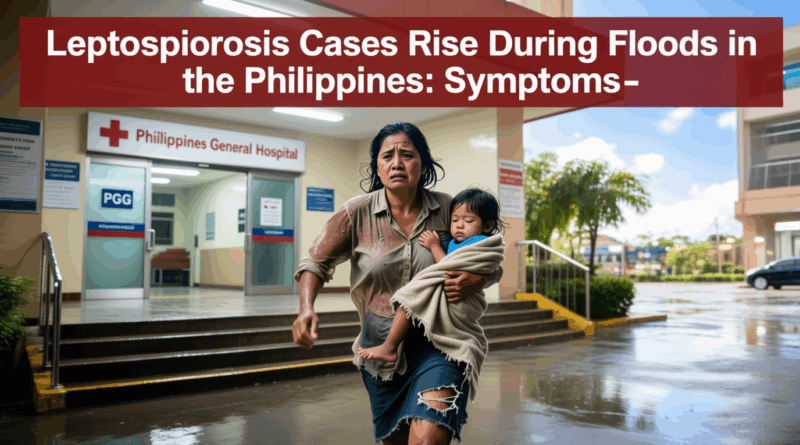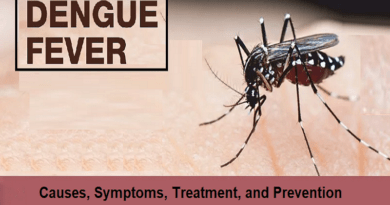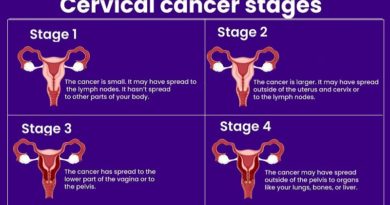Leptospirosis Cases Rise During Floods in the Philippines: Symptoms and Prevention
Introduction
During the rainy season, in the Philippines, with increasing risks of Leptospirosis infection increase. Floodwaters come a silent but serious threat called leptospirosis. Every year, hospitals across the country report a surge in cases, particularly after prolonged flooding in urban areas.
Leptospirosis is a bacterial infection transmitted through water contaminated with animal urine, especially from rats. It can cause severe illness and even death if not treated early. Understanding the symptoms, treatment, and prevention of leptospirosis is essential for every Filipino household during this season.
What Is Leptospirosis?
Leptospirosis is caused by the bacteria Leptospira interrogans, which thrive in moist environments. When floodwater mixes with animal urine, it becomes contaminated. Humans can get infected when the bacteria enter through cuts, wounds, or mucous membranes (like the eyes, nose, or mouth).
You don’t have to swallow floodwater to get infected. Simply wading through it barefoot can be enough. Having open wounds can also lead to infection.
The Department of Health (DOH) has consistently warned about rising cases of leptospirosis during and after floods. This is especially true in densely populated cities as Metro Manila, Cebu, and Davao.
How Leptospirosis Spreads
Leptospirosis is primarily transmitted through:
- Floodwaters contaminated with rat urine
- Contact with wet soil or garbage where infected animals have urinated
- Handling contaminated objects, like muddy shoes, clothing, or tools
- Exposure in farms or sewage systems where rodents are common
Even small skin abrasions or blisters can be entry points for the bacteria. The infection can incubate in the body for 5 to 14 days, meaning symptoms often days after flood exposure.
Common Symptoms of Leptospirosis
Leptospirosis can mimic other illnesses like flu or dengue that are common in the Philippines. This makes it hard to find. Early detection is crucial because the disease can progress rapidly.
Early Symptoms (First week):
- High fever
- Muscle pain (especially in the calves and lower back)
- Headache
- Red eyes
- Chills and fatigue
- Nausea or vomiting
Severe Symptoms (After one week):
- Jaundice (yellowing of skin and eyes)
- Abdominal pain
- Dark or reduced urine output (possible kidney failure)
- Difficulty breathing or chest pain
- Confusion or unconsciousness (in severe cases of Weil’s disease)
If untreated, leptospirosis can cause liver damage, kidney failure, or internal bleeding, which can be fatal.
Diagnosis and Treatment
1. Medical Diagnosis
Doctors diagnose leptospirosis through:
- Clinical evaluation based on exposure history and symptoms
- Laboratory tests (blood and urine) to detect Leptospira bacteria
- Serologic tests like the Microscopic Agglutination Test (MAT) for confirmation
If you’ve waded through floodwater and later develop fever or body pain, seek medical care. Do this even if symptoms seem mild.
2. Treatment
Leptospirosis is curable when treated early with antibiotics as:
- Doxycycline or Penicillin (for mild cases)
- Ampicillin, Ceftriaxone, or Cefotaxime (for severe infections)
Treatment also includes hydration and monitoring of kidney and liver functions. Severe cases need hospitalization and dialysis.
3. DOH Prophylaxis (Prevention Medication)
The Department of Health sometimes recommends preventive antibiotic prophylaxis. This is usually doxycycline. It is recommended for high-risk groups, as rescue workers or residents in flood-prone areas. This must be taken only under medical supervision.
Who Is Most at Risk?
Leptospirosis can affect anyone, but certain groups are more vulnerable:
- Rescue and relief workers exposed to floodwaters
- Residents in low-lying or flood-prone communities
- Farmers and garbage collectors
- Children playing outdoors during floods
- People with skin wounds or abrasions
For these groups, extra care is necessary during and after floods.
Preventive Measures: How to Protect Yourself from Leptospirosis
🧍♂️ 1. Avoid Contact with Floodwater
- If possible, stay indoors during floods.
- Do not walk or wade in floodwaters unless absolutely necessary.
- Use footbridges or other routes instead of flooded paths.
🥾 2. Wear Protective Clothing
- If exposure is unavoidable, wear waterproof boots, gloves, and pants.
- Use plastic bags as temporary foot protection if boots are unavailable.
- After exposure, wash feet and legs thoroughly with clean water and soap.
🧴 3. Keep Good Hygiene
- Clean any wounds with antiseptic.
- Wash hands regularly, especially before eating.
- Take a full bath after flood exposure to remove bacteria.
🚰 4. Keep Food and Water Clean
- Drink only boiled or bottled water.
- Keep food covered and away from rats.
- Dispose of garbage properly to reduce rodent infestations.
🐀 5. Control Rats in Your Area
- Keep surroundings clean and dry.
- Close holes and cracks where rats can enter.
- Store food in sealed containers.
- Encourage community-wide rodent control programs.
Government Health Advisories
The Philippine Department of Health (DOH) regularly issues warnings during the rainy season about leptospirosis outbreaks. In some areas, local health units distribute free doxycycline tablets as preventive medicine for high-risk residents.
Health authorities also remind the public to seek early consultation. Delays in treatment are the leading cause of severe complications and fatalities.
You can access the latest advisories from:
What To Do If You’ve Been Exposed to Floodwater
If you’ve recently been in floodwater, take the next steps:
- Wash thoroughly with clean water and soap.
- Disinfect cuts or wounds with antiseptic solution.
- Monitor your health for the next two weeks.
- Seek medical care if you develop fever, muscle pain, or other symptoms.
- Inform your doctor about your flood exposure.
Do not self-medicate with antibiotics — only take them when prescribed by a licensed healthcare professional.
The Impact of Leptospirosis in the Philippines
The Philippines records hundreds of leptospirosis cases annually, peaking between June and November, when floods are most frequent. According to the DOH, mortality rates can reach 5–10% in severe outbreaks, particularly in communities with poor sanitation.
Recent floods in Metro Manila and Central Luzon have caused spikes in hospital admissions. This highlights the urgent need for public awareness, early treatment, and proper sanitation to control outbreaks.
Conclusion: Stay Alert and Protected
Leptospirosis is preventable — yet it continues to claim lives every rainy season. Awareness, hygiene, and prompt medical attention are the strongest defenses against this flood-related disease.
As the rainy season intensifies, Filipinos must remember: one step into contaminated floodwater can lead to infection. Protect yourself, your family, and your community through vigilance and prevention.
📞 Call to Action
If you suspect leptospirosis or have symptoms after flood exposure, don’t delay.
Contact Helal Medical for immediate consultation, diagnosis, and treatment to prevent serious complications.




